Chris Baty's Blog, page 22
July 14, 2022
What Books To Read at Each Stage of Writing Your Novel

Have you ever wondered what books to read while writing your novel? In this article, Ph.D. and NaNo writer Ursula Saqui offers books to read at every stage of your novel.
With all the craft books available, you might ask yourself, “Should I save a cat, outline using the snowflake method, or take advice from Stephen King?”
The question is also what book to read when. For example, read about subplots when you start writing, and you might get so overwhelmed that you stop altogether. Or, if you draft your story without knowing genre expectations, you’ll have to make significant revisions later.
The following are a few of my favorite books and where they best fit into the writing process.
Before you start writingThe books you read before writing should deconstruct common myths (e.g., suffering is necessary for good writing) that could distract you while also getting you into an optimistic (yet realistic) mindset about the work ahead.
Big Magic by Elizabeth Gilbert is the answer to gut-punching questions like “Who am I to be writing this?” that arise in the gap between having an idea and getting it onto paper. Gilbert offers advice on serious topics such as courage, permission, and persistence while playing the role of your adventurous friend tugging at your sleeve, saying, “Let’s go. It will be fun.” You will finish this book with a plan to handle fear, rejections, and slumps.
Next, Anne Lamott’s Bird by Bird will help you get your pen ready with chapters about the necessity of writing “Shitty First Drafts” and how to focus on writing what you care about (“The Moral Point of View”). By taking Lamott’s advice, you will get your intuition back and start trusting yourself even on the first draft.
While you are writingNow you have confidence, strategies for dealing with roadblocks, and some words written. But, whether you are a pantser or a plotter, you will get stuck and need to fix gaps and edit.
If you want a clear explanation of terms such as “plot point” and “inciting incident,” the mechanics of story arcs, and an easy structure for writing scenes, then James Scott Bell’s Plot & Structure is the best reference. With 14 chapters on technique, writing exercises, and a checklist of critical points, this book offers advice that you can immediately implement and improve your writing.
Matt Bell’s Refuse to be Done also offers concrete advice about things such as creating characters and reusing settings in Section One. However, the biggest benefits come in Sections Two and Three. Section Two guides your first draft to a structurally sound second draft through re-outlining and rewriting. Section Three takes your second draft through multiple editing passes to get you to a final draft that is agent-ready.
After you are done writingWhen your book is nearly ready for publication, Courtney Maum’s Before and After the Book Deal will be a must-read. She answers such practical questions as how authors get paid and how to survive book tours and trickier ones such as how to handle resentment when other authors don’t write a blurb for your book and what to do when you hate your book cover.
Finally, whether or not you end up with a book deal, The Way of the Writer by Charles Johnson will be an excellent read after you finish your novel. It takes you out of the frenzy and reminds you about the fundamentals: the call to write, devotion to the craft, and the pleasure of words. His longevity as a writer and teacher is inspiring and reminds us that we are writers beyond any one work, published or not, as long as we keep putting words to the page.

Ursula Saqui, Ph.D., is a consultant and researcher by day and creative writer by night with works in The Daily Drunk and Multiplicity Magazine. Her current novel in progress is a thriller, The Mancari Murders, which she started during NaNoWriMo 2021. When she is not drinking tea, writing, or hiking, she is shooing any one of their four cats off her desk. You can find her on Twitter at @UrsulaSaqui.
July 12, 2022
3 Writing Tips I Actually Use (And Give to My Students)

We all hear tons of advice, but how much is used by the advisor? In this blog post, middle grade author, teacher, and NaNo Camp Counselor Lisa Stringfellow offers 3 pieces of advice that she gives to her student…and actually uses.
Kids sometimes have the attitude that adults tend to give advice that they don’t follow themselves, and they’re often right. “Do as I say, not as I do” is a saying that too often rings true. As a classroom teacher who is now an author, it was only a matter of time before one of my students asked me that all-important question: “Do you use any of the tips that we’ve talked about in class in your own writing?”
During the virtual launch of my debut middle grade fantasy A Comb of Wishes, dozens of my students joined me on Zoom and this question floated up through the chat like a challenge. They knew that I had started my novel as a NaNoWriMo project way back in 2013, and that I had written and revised the manuscript over several years. But in that public forum, they wanted to know the truth–and I was ready with an answer!
Here are three tips that I give with my middle school students AND actually use myself in my writing:
Take Risks…Don’t JudgeI share these words from author Julie Danneberg every year with my students before NaNoWriMo begins: “If you believe that everything you write must be good, you won’t be willing to write something bad. And if you aren’t willing to write something bad, then you won’t risk experimenting with something new, or playing around in a new way with something old.” Writers can be perfectionists and we are often our harshest critics. The problem is that ideas don’t flow from our brains, out our fingers, and onto the page polished and ready for publication. Nothing inhibits creativity, divergent thinking, and risk-taking more than premature self-judgment. There’s a reason “ban the inner editor” is a hallmark of NaNoWriMo. Let the words flow and be kind to yourself. Everyone’s first draft is…well, bad!
Finish First!There is a time for revision, but that time is not until the writing is done. Even the most experienced writer has to put aside the urge to polish until they get all the words out. Otherwise, you can wind up in an endless cycle of revising and never get to the end of the draft. Sometimes, revision can be a form of procrastination. You don’t know what to write next, so you go back over what you’ve already written. A better plan–skip to the next part where you DO know what to write. No one said we have to write in order. Leave a comment or note about what needs to be added later, and keep plugging away.
Give Yourself TimeWhen we finish a piece of writing, our first instinct might be to go back to the beginning and start revising immediately. STOP! A better strategy is to put the piece aside. Depending on any deadlines or due dates, it might be for just a day, but if possible, a week or more is ideal. When working on something intently, time and mental distance can be our biggest ally in making revisions that matter. I often put aside my work for two weeks or more before coming back to it. What that gives me is the ability to look at it as a reader, and not the writer. Fresh eyes allow me to think about structure, language, and other elements of my work more critically.
Wrap UpMoving from English teacher to author has shifted my perspective on writing and the creative process. If writing is a sport, I am no longer the fan trying to ref the game from the stands; I’m an athlete on the field. My students? They’re playing right beside me. Read your work aloud, Find other writers with whom to share your work. We can share with each other pieces of writing advice that come from trial and error and the process of creating something we’re proud of.
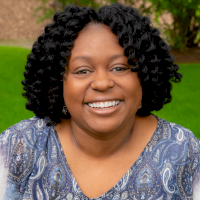
Lisa Stringfellow writes middle grade fiction and has a not-so-secret fondness for fantasy with a dark twist. Her debut fantasy A Comb of Wishes was selected as an ABA Indie Introduce Kids and Indie Next Kids title and is a 2022 Horn Book and Today Read With Jenna Jr. summer reading selection. A middle school teacher for over 28 years, she is passionate about engaging students in their learning through authentic writing experiences, such as the NaNoWriMo Young Writers Program. Lisa lives in Boston, Massachusetts, with her children and two bossy cats.
My Social Media
Both Twitter and IG: @EngageReaders
HarperCollins/Quill Tree Books
Twitter: @HarperChildrens and @QuillTreeBooks
IG: @HarperKids
Publication Date: February 8, 2022
July 11, 2022
How to Build Great Writing Partnerships

Every year, we’re lucky to have great sponsors for our nonprofit events. First Draft Pro, a 2022 Camp NaNoWriMo sponsor, is a collaborative writing app built for story-nerds. Get free access during July 2022 for Camp NaNoWriMo! In this post, founder Tarryn-Anne Anderson shares helpful tips for writing collaboratively:
We often think of writers as loners on the outskirts of society, scribbling furiously in their notebooks and pecking away at their typewriters. So it’s pretty easy to conclude that writing is solitary, and perhaps even lonely, work.
But collaboration is actually an integral part of storytelling! Along the journey from idea to publication, most books are the loving work of multiple people: co-writers, editors, and beta readers. That said, storytellers don’t always have the right tools to help them work effectively with others. Let’s take a look at a few tips to help you get the most out of working collaboratively:
Co-writersWorking with a co-writer is probably the most obvious kind of partnership – you share the vision for a manuscript with another writer and work through the creative process together to get it done. Yes, you might need to relinquish some creative control, but the insight into someone else’s process can be really fun and inspiring!
Tips for cooperating with co-writers:
Play to each other’s strengths. Perhaps one of you is great at realistic dialogue while the other can write some epic descriptive prose. Bring the best of your skills to your story by focusing on what you’re good at.Work transparently. Choose a good cloud-based writing software (hint, hint) so that you can both work on your manuscript at the same time – even when you’re working remotely. Stay motivated. Set some shared goals for your manuscript. A target word count is often just what’s needed to inspire some furious typing. EditorsWriters are naturally protective over their stories! But don’t let your pride (and, ahem, prejudice) get in the way. Editors are there to spot the small things like grammar and typos, but also to offer suggestions on the bigger picture like how to tighten up your plot, or make your characters more relatable.
Tips for embracing working with an editor:
Version control is your friend. You can expect a bit of rewriting during the editing process, but being able to track suggestions and roll back to previous versions allows you to let go and embrace change.Write in sections so that you can easily juggle bits around if need be. When that big edit comes in, it will be much simpler to shuffle scenes or chapters around. Beta readersBeta readers are there to give you feedback from the perspective of a potential real-life reader. As such, your partner or bestie usually doesn’t make the best beta reader because they’re (hopefully!) less willing to dish out criticism about your work. Choose someone you trust, but who you know will be honest – the point is to make your story the best it can be, not to crush your spirit!
Tips for benefiting from beta readers:
Select readers who expand your worldview. Choose beta readers who might have life experiences or perspectives that differ from your own, or that align with your characters. Their feedback will help you make your work more authentic.Show your working. Give your readers context! Leave them notes and direct them to specific sections of the manuscript where you’re struggling or want a second opinion. Gather feedback in one place. Allow your beta readers to comment directly on your manuscript. That way there’s no confusion as to what they’re referring to, making it easy to implement the suggested changes.There really is magic in writing collaboratively. Although some parts of the writing process will be down to your individual genius, what better than to nerd-out with fellow story lovers about the nitty-gritty of your manuscript?
First Draft Pro is designed with exactly this kind of collaboration in mind. Shuffle scenes, track changes, keep notes and refine your manuscript – together. Get free access to First Draft Pro for the duration of Camp NaNoWriMo! Whatever your goal, we’re here to help you meet it.
July 8, 2022
“Trust your process. I’m writing my fifth book for publication...
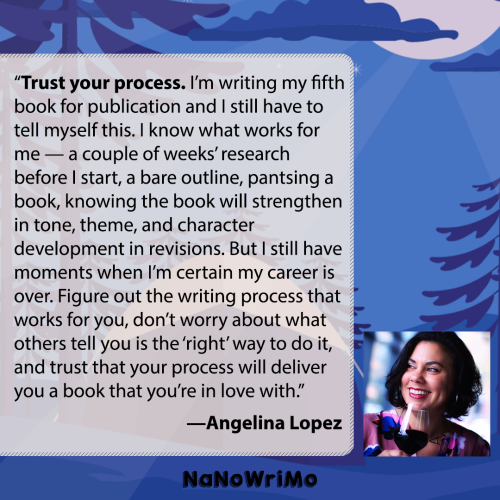
“Trust your process. I’m writing my fifth book for publication and I still have to tell myself this. I know what works for me — a couple of weeks research before I start, a bare outline, pantsing a book, knowing the book will strengthen in tone, theme, and character development in revisions. But I still have moments when I’m certain my career is over. Figure out the writing process that works for you, don’t worry about what others tell you is the “right” way to do it, and trust that your process will deliver you a book that you’re in love with.”
—Angelina M. Lopez has been writing professionally her whole life: first as a journalist for an acclaimed city newspaper, then as a freelance magazine writer, and now as a romance author. Her new book, After Hours on Milagro Street, has received rave reviews from Publishers Weekly, Library Journal, Entertainment Weekly, and Booklist. Angelina lives with her family in Houston, Texas.
July 7, 2022
Your Subconscious Is Trying to Help You--An Excerpt from Your Writing Matters by Keiko O’Leary
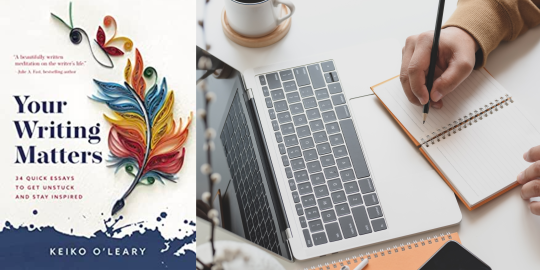
Have you ever considered that your subconscious is trying to help you with writing when you have that song stuck in your head? Keiko O’Leary, author of the upcoming book, Your Writing Matters, offers her insight on this phenomenon. Check out the book here. Read this excerpt of Your Writing Matters below.
Do you ever get a phrase in your head, maybe a line from a poem you learned as a kid? Or it could be the title of a story, or a bit of dialogue, or even a few words from your own work. Or sometimes a song that you haven’t heard in years, but now you can’t get it out of your head.
Probably you don’t do anything with these phrases, except maybe complain about the song.
But what if these phrases are messages?
When my grandma was dying, I got a line from a Paul Simon song in my head: “the rose of Jericho and the bougainvillea.” I hadn’t heard the song in years, and I decided to listen to the entire album (The Rhythm of the Saints, a brilliant collection of music and poetry). It gave me perspective on the way my grandma had influenced our family’s life and my life, and I felt like I understood her story better. And when I finally got to the actual line, it turned out to be in a passage about a funeral. That was the first time in the grieving process that I was able to cry.
I know that art helps us grieve and celebrate, that it helps us experience and make sense of our feelings, that it helps us live and choose how to live. But I hadn’t realized that the art I need has often come to me through seemingly random phrases that popped up in my mind. Every time I go listen to a song that’s stuck in my head, I find what I need at that moment. And it doesn’t just work with songs. Sometimes a title will float through my mind (“We Will Drink a Fish Together” by Bill Johnson), or a line of a poem (“What immortal hand or eye” from “The Tyger” by William Blake), and if I go to the source and let myself experience the entire piece, it is always what I need. Sometimes it’s not what I want: sometimes I don’t feel ready for the transformation that the art brings me. But I have chosen to live as a protagonist, and that means I must suffer change in order to experience meaning.
Looking back on all the times this has worked, I conclude that something is trying to help me. Let’s say it’s my subconscious mind. Whatever it is, it’s sending me messages of art that can change me in the way I need to be changed.
It sometimes even uses my own writing. While I was editing this book, I experienced great swaths of zero motivation. Sometimes the only thing that kept me going was rereading the essays and trying to take my own advice. And plenty of times, what led me to the essay that helped was a little phrase that floated into my head, seemingly out of nowhere. But now I think it’s not out of nowhere: it’s out of somewhere that knows what I’m going through and is trying to help.
You might not live in a sea of allusions like I do, but still, if a phrase pops into your head, maybe try tracking down and experiencing the entire work. It
could be just what you need.
P.S. These phrases can also help you solve problems in your writing. If you’re stuck on something in a piece you’re working on, listen for the phrases that pop into your head. They could lead you to a solution.
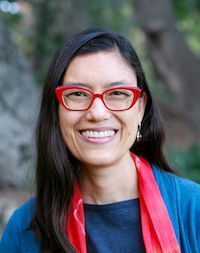
Keiko O’Leary helps writers see the big picture while taking meaningful action today. She is a writer, editor, artist, and speaker. A leader in San José, California’s literary community, Keiko teaches workshops and organizes the long-standing writing group Write to the End. She writes short pieces, including poetry, flash fiction, and essays. Connect with Keiko at KeikoOLeary.com, and pre-order Your Writing Matters.
July 6, 2022
NaNo News: 2022 Updated In-Person Events Policy

As a nonprofit, NaNoWriMo works year-round to make creative writing more accessible to people: helping people to tell their stories the way they want to tell them. One way we do this is by working with volunteer Municipal Liaisons (or MLs) who host writing events in neighborhoods around the world.
At this stage of the pandemic, both acute and long COVID present risks to ourselves, loved ones, and those in our immediate and global community. Each person’s needs and relationship to that risk are unique! We do expect our MLs and participants to accommodate to the best of their ability the needs and health risks of participants who opt-in to in-person events, per the policy guidelines below. We appreciate your care and solidarity with those who are often most at risk, including those members of our community who are disabled, immunocompromised, and/or elderly.
This means that:Municipal Liaisons who are interested in doing so will be planning in-person events: Write-ins will be announced through the NaNoWriMo website. (If you haven’t already joined your local region, you can find your region here to get these announcements.)MLs are not obligated to host in-person write-ins. Please remember that different people have different situations, health conditions, and reasons for not being able and/or willing to participate in in-person events.
If your ML is not hosting in-person events, and you would like to attend an in-person event in your region, you can plan to host one yourself and submit the event information through your regional landing page.
Your event cannot require payment of any kind (not even a “please purchase at least one food/drink item”).
Your event cannot be held at a private home. It must be in a public space, or business that is open to the public.
In-person events can once again be promoted on our website and forums. The “in-person” option for the events tool on the website will be re-enabled as soon as possible.Important Caveats:NaNoWriMo reserves the right to shift our position on in-person events, based on how the ongoing COVID-19 pandemic evolves. We are counting on our community to support and protect one another in accordance with ever-changing health risks, and we expect MLs to abide by any future policy changes, including a return to virtual-only events if necessary.
NaNoWriMo HQ will be providing risk mitigation and harm-reduction guidelines for MLs and participants who are interested in hosting in-person events as safely as they can.
NaNoWriMo HQ will continue providing virtual events regularly for those people who can’t access in-person events and/or prefer virtual events. We’re highly encouraging all MLs to continue providing virtual events to their regions (either themselves or through other local volunteers), but understand that volunteers can only do so much based on their own capacities!Our Process:
In late March of this year, we sent a survey to our 800+ ML volunteers to get their perspective on in-person events. Here are some takeaways:
Question: Please share which of the below options is your preference for HQ in-person event policy in 2022.
Continue [NaNoWriMo’s] policy from the last two years of not allowing any in-person events: 14.8%Allow MLs to choose to be an “in-person ML” or a “virtual ML”, and offer guidance as best we can for “in-person” MLs who choose to coordinate in-person events: 65.3%Allow all in-person events: 9.4%We then sent a survey out to the rest of our participants, and received 1,253 responses.
Question: Would you feel comfortable attending an in-person, NaNoWriMo-related event this year?
Yes: 51.1%Yes, if certain safety precautions were in place: 36.2%No: 12.7%Question: If in-person meet-ups and virtual meet-ups were available this year, which would you attend?
I would attend both in-person and virtual events: 67%I would attend only in-person events: 16.6%I would attend only virtual events: 15.3%I am not interested in events of any kind: 1.1%Finally, we surveyed the libraries and community centers that we often partner with through our Come Write In program. We had 58 respondents.
Question: What kind of events is your location holding currently?
In-person events only: 12.1%Virtual events only: 6.9%In-person and virtual events: 79.3%We do not hold/are not holding events: 1.7%Based on these surveys, the shifting policies of governments around the world that are grappling with COVID-19, and staff discussion of the perspectives of trusted medical professionals and disabled community members, we made the decision to allow in-person events while also maintaining our increased level of virtual events. We also decided to provide trainings to MLs who are hosting in-person events, and to share harm-reduction/risk-mitigation strategies with our writing community.
Final Thoughts and How to Provide Feedback:Thank you so much for your feedback, your patience during these last two years, and for all that we’ve done together to see this creative community thrive and become more inclusive and thoughtful of people with disabilities, health conditions, and family considerations. If you have any additional feedback for us, please email us at dei@nanowrimo.org.
June 30, 2022
A Comprehensive Guide to Self Publishing Your Book
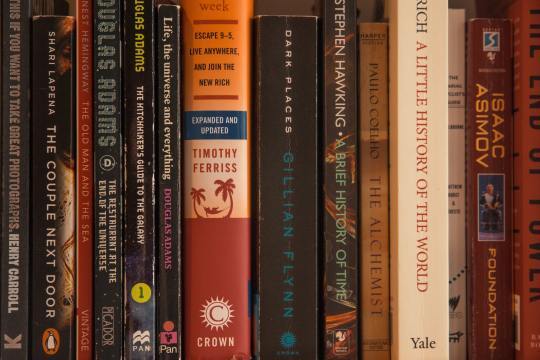
Publishing a book is every author’s dream, but the path there can be rocky and blocked by a huge wall of information that you need to know. Today, Deborah Dixon has written a comprehensive guide to self-publishing discussing editing printing, distribution, ISBNs, and marketing.
Publishing a book is a rewarding experience, but it can also be confusing or demanding as well. Here is a very brief look at the steps an author can take towards being published.
First ask yourself if you would prefer to be traditionally published or self-published. Both routes are viable and respectable, but they are very different. Traditional publishing involves finding an agent through the process of querying. Authors submit documents like synopses, query letters, and first chapters in hopes that the agents they submit to are interested enough in their manuscript to represent them. Once accepted, the agent finds a suitable publishing house for the author, and all parties coordinate to publish the book from there.
Self-publishing involves much more direct author participation. The author will generally handle editing, marketing, printing, and distributing the book, often with assistance from third parties. There is no need to query agents, but an author should still be prepared to explain their book from a sales standpoint. In self-publishing, the author is their book’s best advocate.
EditingUsually, the first step in self-publishing is having the manuscript professionally edited. This is a crucial step that should be taken even if the author is an excellent self-editor. Even the best editors can overlook common mistakes in their manuscripts! The Editorial Freelancers Association is a wonderful resource for finding an editor.
Printing & DistributionIf you’re planning to print your book, you’ll want to decide whether you want to print a run of books upfront or set up print-on-demand. Book printers like Gorham can print many copies of your book and ship them to you for placement in bookstores and the like. Alternatively, though, you can use print-on-demand (POD) services like IngramSpark or Lulu. KDP Print is a great option for authors who are mostly looking to sell print books on Amazon. POD is often considered the cheapest option because you don’t have to invest as much upfront. Rather, POD vendors will take a (pretty big) cut of every book you sell, but you get the added bonus of not dealing with printing, distributing, or shipping.
If you elect to pursue distribution through your own means, you’ll have to purchase your own ISBNs. Think of an ISBN as the ID card of your book. Every book needs one, and they will need a different one in every format. If you want to publish your book as an ebook, hardcover, and paperback, you’ll need 3 ISBNs. Therefore, it might be more economical to buy them in bulk. If you’re in the US, you can buy your ISBNs from Bowker, and they never expire, so you can use them for future projects. If you go with KDP Print, Amazon will provide you with a free ISBN, but bear in mind that it’s not truly free. Since KDP “owns” your book, it will be difficult to get into brick and mortar bookstores, Barnes and Nobles, and other distributors that could get your book more reach. On the other hand, if you purchase your own ISBNs, you can distribute them anywhere.
Once you have your books in print, you’ll want to reach out to your local bookstores to place your books there as well. Many book stores will sell your books on a consignment arrangement with you, meaning that you receive your portion of the sale when the book is bought. Building relationships with your local booksellers is also a part of marketing, as booksellers make great advocates for books they like!
You may also want to consider distributing your work as an ebook. For this, you’ll want to create accounts at Apple iBooks, Barnes & Noble, Kobo, and Amazon if you so choose. These all generally take a portion of your sales as payment, and so are free to set up initially.
MarketingAnother important step in self-publishing is marketing. It is a good idea to have a marketing plan set up in advance of selling the book. Marketing covers many facets, like book design, book promotion, and publicity. It is its own discipline, and many authors might not have the time or know-how to develop a solid marketing plan. For those authors, services like Reedsy, Scribe, and BooksGoSocial can be of great help.
Through all of these steps and going forward, you want to be marketing your book. Consider going to book fairs and other book events, whether in-person or virtual, and reach out to your local and national news outlets. It never hurts to tell people about your book—and the more who know about it, the more who will read it!
With this baseline information, I hope you feel ready to embark on your self-publishing journey!

Deborah Dixon is a writer and author advocate with Shalamar. She is also an editor for Radon Journal and a student of George Washington University’s Publishing program. She lives with her partner and their dog, Spirit.
Photo by Stephen Phillips - Hostreviews.co.uk on Unsplash
June 27, 2022
How NaNo Camp-Ins Helped Me Finish My NYT Profiled Book

We all know about NaNoWriMo, but what about CampMo? CampMo is when a bunch of Wrimos get together in a writing-retreat format. Cathy Salustri, author of the NYT Profiled travel writer, talks about her experience with CampMo, and how it helped her finish her book. Disclaimer, we are still cautiously opening up to in-person events like CampMo. It’s tentative that it will happen this year, and if it does, we encourage following COVID-19 protocols and being safe and responsible!
The first time I participated in NaNoWriMo, I hadn’t written anything creative since my undergrad days, which predated email, to give you an idea. I didn’t think I had it in me… until a germ of an idea took hold right about the same time I learned about NaNoWriMo. Most of my writing that year involved late nights at a massive maple table. I crammed in the last few words, checking my word count a few seconds after midnight, thus barely missing “winning” NaNo my first year.
The next year, I discovered write-ins. I also discovered CampMo, or NaNoWriMo camp-ins.
Lest you think this involved huddling in pup tents and writing by firelight, let me disabuse you of that notion: We camped in cabins at Lake Louisa State Park, and these cabins? Well, they weren’t exactly rustic: They had two bedrooms – one with an ensuite bathroom – dishwashers, full-size refrigerators, gas fireplaces, screened porches with rocking chairs, and comfy futon couches and chairs. The only thing missing was an icemaker, but, well, we all have to suffer for our art.
For three days and two nights, WriMos filled the cabins, writing and eating and writing and drinking and writing some more. The lack of cell service, TV, or wi-fi forced us to spend time in our imaginations, and I wrote something like 25,000 words in three days.
Some years later, I had an actual book contract for a Florida travel narrative based on 1930s-era road trips. I’d done the research. I’d written the book proposal. I’d gotten the contract. My first meeting with my editor went well, until I casually asked her how much she thought the book would cost readers. She said she’d take a look at the projections and budget from whatever department did those things, and I froze.
This wasn’t my book any longer, I realized. This was something more; it now lived officially outside my head. However well it sold – which means, of course, however well I wrote it – would impact people’s jobs. My publisher was investing time, money, and talent into bringing my book to print – and if I failed, they would suffer.
I stayed frozen for a few months more. The voices in my head constantly reminded me how much other people had invested in a book I couldn’t seem to write.
And then it was November. I took a leave of absence from my paying writing job – a hyperlocal weekly newspaper where I covered city council, Little League, and various duck scandals – and focused on churning out a draft.
And I went back to the cabin to find that CampMo magic. I fell upon that cabin like a menopausal woman on an ice floe. I holed up in a chair and, with all the distractions of the world removed, I wrote. And wrote. And then I had a beer, because this isn’t a movie and I’m human. But then I wrote some more. I took a short walk through the woods, sure. I left to go get more beer. But I wrote.
Although I didn’t finish the draft that weekend, I wrote a lot of it, and finished the rest of it by November 30. Months after publication, the New York Times profiled “Backroads of Paradise.” The publisher printed a second run, then a third.
CampMo Magic.
This year, with (hopefully) the worst of COVID-19 behind us, I’m looking at November cabins again, hoping not only to go back and meet the magic, but to share it with other writers.
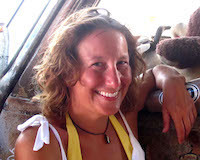
Cathy Salustri works out of Gulfport, Florida, travels across Florida on foot, bike, boat, or car to places the Interstate bypassed long ago, as well as those spots where natural beauty has survived the onslaught of overpopulation. She attended the University of Central Florida, and earned her undergraduate degree at the University of Tampa finding the Florida Studies MLA program at the University of South Florida St. Petersburg. Cathy has written travel pieces for USA Today, Visit Florida, regional magazines and local press. You can find all her travel writing at the greatfloridaroadtrip.com.
Photo by baikang yuan on Unsplash
June 24, 2022
What I Hate About My Book

In this deeply introspective and important article, Rev. Dr. Brenda Walker talks intimately about what she hates about “Martine: A Memoire”, the book she’s writing
Writing a book is the fulfillment of a lifelong dream, a goal I recorded in my journal in 1971, when I was 12 years old. The dream was sidelined as I followed the call to ministry and served in congregations for nearly 40 years. Fifty years later, I have a full manuscript of sixty thousand words. There is great joy in having participated in writing classes in my local community and joining writers all over the country through NaNoWriMo.
My memoir examines the denial, lack of information, secrets and silence within our family surrounding the death of my oldest sibling, whose body was found in San Francisco in December of ‘93.
It was only after our parents died that I began to uncover, connect and come to terms with the past.
Here’s what I hate about my book:That the reason it is relevant is because LGBTQ rights are under attack.That the gains that have been made, fought for, marched for, and advocated for are being threatened, taken back, or reversed.That disinformation and lies are being spread and counter voices are needed now.That today, in 2022, families with transgender children are forced to flee from states which are criminalizing gender-affirming care.That some of these families departed from Alabama to California, following the same path my oldest sibling, Martine, took on June 2, 1982, forty years ago this week, as she set out from Tuscaloosa, Alabama, to San Francisco, seeking help for her gender transition. What I hate about my book:That sometimes writing it is painful.That I regret not being a more vocal advocate for the LGBTQ community when I served congregations as a pastor for more than thirty years.That Martine died, that we denied, that it took so many years for me to delve into what really happened, that I will never know what really happened, and that I will only ever know what is happening to me and to our world now.That I am tempted to make this about me, my regrets, my rants, my pain.That I wonder if my anger simply serves my ego, rather than enabling me to be creative and become a vessel of change.What I hate about my book:That it is taking so long to finish, and I forget that it will take as long as it will take.That my anger causes me to freeze, when in fact it is my fuel, effective when I focus and let it guide me to the truth.That I can no longer look away as I find out more about the organizations—and the people who fuel and fund them—that contribute to such harm, and I must look and I must share this information now.That I am tempted to forget that there are more people than ever before advocating, aiding, and sharing compassion that shines brighter than condemnation, and love stronger than any bitterness and anger.That I am digging ever deeper, that I am already in so deep, that I may forget that I already have more courage than I ever knew.
Rev. Dr. Brenda Walker is the author of the forthcoming Martine: A Memoir, Her Disappearance, Mysterious Death and What I Learned About My Transgender Sister That Changed the Trajectory of My Life. Her focus is on helping faith communities become informed advocates and safe spaces for transgender people and their loved ones. Find her book trailer and blog at https://www.pastorbrendawalker.com/martine-memoir
Brenda and her husband, Dan, live in Richmond, Virginia, by the James River.
June 22, 2022
Writing Descriptions, Perseverance, and Other Words of Advice from Legendary Authors
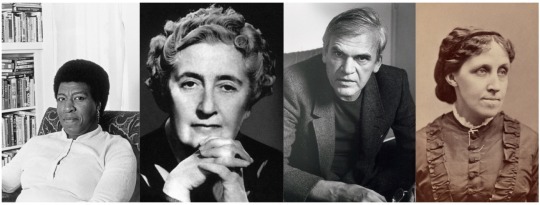
One of the best ways to grow as a writer is to learn from others. Today on the blog, Olga Stal has compiled great advice from 4 legendary authors that will hopefully energize your writing spirits and give you new tools and tricks to try!
Octavia Butler–Read Often, Write Often, and Forget TalentOctavia Butler was a science fiction author and penned many award winning novels, like Kindred, Patternmaster, and more. She is an example of persistence. In childhood she struggled with dyslexia, but that didn’t stop her from becoming a writer. Here are 3 pieces of advice that she recommends to novice authors in this interview.
“I have advice in just a few words. The first, of course, is to read. It’s surprising how many people think they want to be writers but they don’t really like to read books.”“Write, every day, whether you like it or not. Screw inspiration.”“Forget about talent, whether or not you have any. Because it doesn’t really matter. I mean, I have a relative who is extremely gifted musically, but chooses not to play music for a living. It is her pleasure, but it is not for a living. And it could have been. She’s gifted; she’s been doing it ever since she was a small child and everyone has always been impressed with her. On the other hand, I don’t feel I have any particular literary talent at all. It was what I wanted to do, and I followed what I wanted to do, as opposed to getting a job doing something that would make more money, which would make me miserable. This is the advice that I generally give to people who are thinking about becoming writers. It’s certainly not a matter of sitting there and having things fall from the sky.”Agatha Christie–Writing Gripping Mystery, Writing Descriptions, and Removing Distractions
Secondly, I’ll talk about the queen of mysteries, Agatha Christie, author of the famous Murder on The Orient Express. Her detectives fascinate me because it’s hard to guess who the killer is.
How did Agatha create her novels? Work on the novel began with the development of intrigue. Then she inscribed the crime in the interior (in an apartment, house, plane or train), then a detective was connected, then the investigation proceeded in a logical direction. Agatha clearly planned her works down to the smallest detail. Dialogues, interiors, landscapes, descriptions were carefully and meticulously laid out. When she sat down to write, she used the “closed door” technique, leaving all worries and distractions to fully immerse herself in her book.
If you are looking for a great example of precise and vivid descriptions, pick up an Agatha Christie book and take notes on how she does it! Also try the closed door technique and see if it works for you.
Milan Kundera–Writing With Purpose and PhilosophyMilan Kundera is the author of many novels, one being The Unbearable Lightness of Being. In my opinion, Kundera is an example of human resilience. When he was 39, Soviet troops occupied the Czech Republic. His life collapsed. He survived the occupation and emigration. At 46, he had to start all over again. And he started.
While reading his novels, I noticed a few moments.
Notably, his characters are philosophical. Each of them are driven by their ideological beliefs, and think deeply about the philosophical implications of their actions. Kundera doesn’t describe the human body as a perfect, unattainable ideal. The character’s body may have some shortcomings, but the hero does not see those imperfections as inhibiting, limiting, or disappointing.
In his “The Art of the Novel” Milan Kundera outlined several interesting positions:
The writer must show not what he feels;The plot should revolve around the central theme;History and philosophy should be presented in doses, to understand the characters and the logic of their actions.The character should be endowed with a worldview; It is necessary to write concisely, immediately throw the reader into the story and characters, so that the reader immediately understands the essence of the novel;Write to survive a moment of ecstasy. Louise May Alcott–Success When Least ExpectedLouise May Alcott is the author of perhaps one of the most iconic novels in Western Literature: Little Women. From the age of seven she kept a diary, where she wrote down about her feelings, impressions, ideas. She kept them, later reread them, found interesting moments, and recycled them in novels and stories. In her early career, she wrote spicy novels to make a living, though she condemned it later on.
Alcott was actually reluctant to write Little Women. She didn’t think it was a great idea. She was surprised by its success and critical acclaim. This is a great lesson on believing that what we want may come when we least expect it. Therefore, writers, don’t give up!
As for Alcott’s craft, she created interesting, distinct characters. Each of them has its own characteristics, preferences, hobbies, thoughts. They aren’t confused with each other, each of them has a bright persona. She pays a lot of attention to each character. Moreover, women in her works are depicted as strong and creative personalities. Also in her novels, Alcott realistically depicts life.
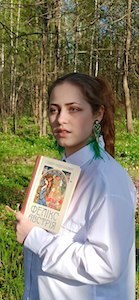
Olga Stal is from Ukraine. She loves writing novels, reading and creating something new. She runs a blog on Instagram (@olga_stal_ ), where she writes reviews of books, shares her writing experience, and talks about Ukrainian culture, art, history, prominent figures. She also writes articles for various projects.
Chris Baty's Blog
- Chris Baty's profile
- 63 followers



